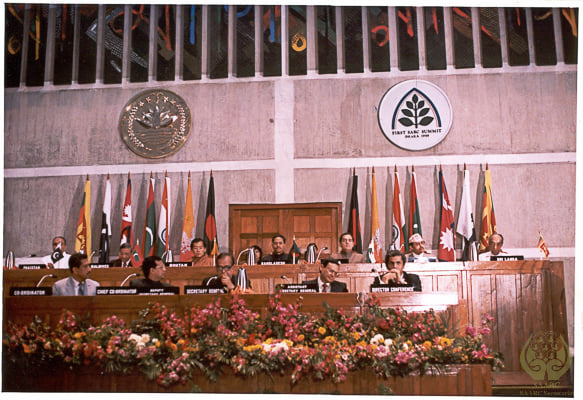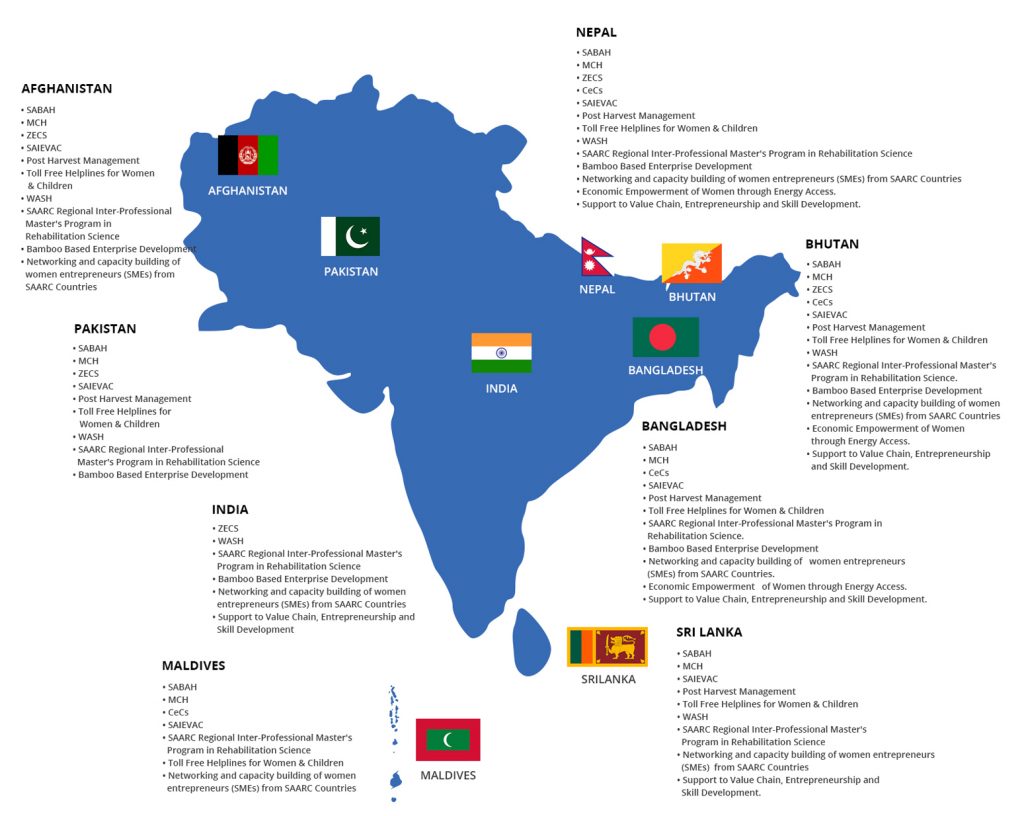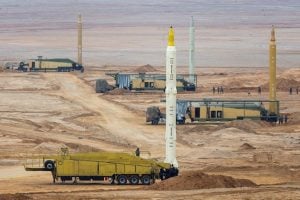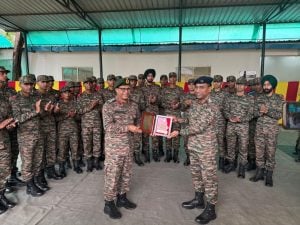What is SAARC? This questions is being asked in many competitive exams and persona lnterview. Mandy defence aspirants have faced this question during SSB Interview. In this article we are going to know about SAARC and important details related to it.
The South Asian Association for Regional Cooperation (SAARC) is the regional intergovernmental organization and geopolitical union of states in South Asia. Its member include are Afghanistan, Bangladesh, India, Bhutan, Maldives, Nepal, Pakistan and Sri Lanka.
As of 2019, SAARC comprises 3% of the world’s area, 21% of the world’s population and 4.21% (US$3.67 trillion) of the global economy. It launched the South Asian Free Trade Area in 2006.
- Download Our App to enrol yourself for SSB Interview online coaching.
- Book Your Slot for SSB Interview Online Class
Historical background of SAARC
Three conferences can be held responsible for the formation of SAARC. These conferences are the Asian Relations Conference held in New Delhi in April 1947; the Baguio Conference in the Philippines in May 1950; and the Colombo Powers Conference held in Sri Lanka in April 1954.
- The seven inner South Asian countries of Bangladesh, Bhutan, India, the Maldives, Nepal, Pakistan, and Sri Lanka agreed to form a trading bloc in the late 1970s and to provide a forum for the people of South Asia to work together in a spirit of peace, trust, and understanding.
- President Ziaur Rahman later addressed official letters to the leaders of the South Asian countries. Later, this proposal of regional cooperation was discussed with india also. At that time, the prime mister of India was Morarji Desai.
- In 1977, King Birendra of Nepal gave a call for close regional cooperation among South Asian countries in sharing river waters. Nepal, Sri Lanka, Bhutan, and the Maldives quickly approved Bangladesh’s proposal, but India and Pakistan were originally sceptical.
- India was first spectacle about creating a regional dialogue as it would have given the small neighbours of India, a chance to re-internationalize all bilateral issues and to join with each other to form an opposition against India.
- Whereas, Pakistan was scared that this regional cooperation was might be a diplomatic plan or strategy of India to create an economic monopoly in the South Asia.
- However, it was agreed that Bangladesh would prepare a draft of a working paper for discussion among the foreign secretaries of South Asian countries after a series of diplomatic consultations led by Bangladesh between South Asian U.N. representatives at the UN headquarters in New York from September 1979 to 1980.
Finally, in 1983, the Declaration on the South Asian Association of Regional Cooperation (SAARC) was adopted by the international conference held in Dhaka.
They also formally launched the Integrated Programme of Action (IPA) initially in five agreed areas of cooperation namely, Agriculture; Rural Development; Telecommunications; Meteorology; and Health and Population Activities.
The first SAARC summit was held on 7–8 December 1985 and hosted by Hussain Ershad, that time President of Bangladesh, in Dhaka. Esala Ruwan Weerakoon is the current Secretary General of SAARC.
The entry of Afghanistan into SAARC
Afghanistan is considered a part of Central Asia. But it is neither accepted as a Middle Eastern country, nor as a Central Asian country. Although in 2005, it had applied to gain the membership of SAARC. Inducting Afghanistan would have questioned the very identity of South Asia. But after a series of negotiations, the SAARC states came to a solution. They imposed a stipulation on Afghanistan to conduct the general non-partisan elections. As suggested, Afghanistan had its general non-partisan election held in 2005. And after huge efforts in debate and discussions, Afghanistan finally became a part of SAARC in 2007.
Aims of SAARC
Being a regional cooperative organization, SAARC commits to increasing cooperation in trade, geopolitics, culture and other spheres. To enhance the effectiveness of SAARC, it has aimed to do the following:-
- Enhance the well-being and quality of life of the people of South Asia.
- Accelerate the region’s economic, social, and cultural development by ensuring that all people have the opportunity to live in dignity and reach their full potential.
- Encourage and strengthen South Asian countries’ collective self-reliance.
- Contribute to mutual trust, understanding, and respect for one another’s issues.
- Encourage active collaboration and mutual help in the disciplines of economics, social science, culture, technology, and science.
- Collaboration with other emerging countries should be strengthened.
- Strengthen international cooperation on topics of shared interest among themselves; and
- Work with worldwide and regional organizations that have comparable goals and objectives.
Observer countries of SAARC
Australia, Iran, China, Japan, the European Union, Mauritius, Myanmar, South Korea, and the United States are the observer countries.
Whereas in the case of Myanmar, it has expressed its desire to upgrade its status as a member country of SAARC from the observer country.
China, Russia, Turkey, Indonesia, Jordan, Canada, the United Kingdom and Yemen are some of the states that have expressed their desire to either join or get the observer status for SAARC.
It is a matter of diplomacy, and it depends on the members of SAARC to allow these countries their willing status in SAARC.
Headquarter of SAARC
The SAARC Secretariat is in Kathmandu which was established on 16 January 1987 and was inaugurated by the late King Birendra Bir Bikram Shah of Nepal.
SAARC states have also created SAARC specialized bodies in different fields in their state. These bodies are managed by their respective Governing Boards composed of representatives from all the Member States. Look at the table below for more information about the SAARC specialized bodies, their headquarters and states.
| Specialized Body | Location | Country |
| SAARC Arbitration Council (SARCO) | Islamabad | Pakistan |
| SAARC Development Fund (SDF) | Thimphu | Bhutan |
| South Asian University (SAU) | New Delhi | India |
| South Asian Regional Standards Organization (SARSO) | Dhaka | Bangladesh |
SAARC Regional Centres
The SAARC Secretariat is aided by the following Regional Centres, which have been created in member states to foster regional cooperation. The Governing Boards of these Centres are made up of delegates from all the Member States, the SAARC Secretary-General and the Ministry of Foreign/External Affairs of the Host Government.
| Regional Centre | Location | Country |
| SAARC Agricultural Centre (SAC) | Dhaka | Bangladesh |
| SAARC Meteorological Research Centre (SMRC) | Dhaka | Bangladesh |
| SAARC Forestry Centre (SFC) | Thimphu | Bhutan |
| SAARC Development Fund (SDF) | Thimphu | Bhutan |
| SAARC Documentation Centre (SDC) | New Delhi | India |
| SAARC Disaster Management Centre (SDMC) | Gandhinagar | India |
| SAARC Coastal Zone Management Centre (SCZMC) | Malé | Maldives |
| SAARC Information Centre (SIC) | Kathmandu | Nepal |
| SAARC Tuberculosis and HIV/AIDS Centre (STAC) | Kathmandu | Nepal |
| SAARC Human Resources Development Centre (SHRDC) | Islamabad | Pakistan |
| SAARC Energy Centre (SEC) | Islamabad | Pakistan |
| SAARC Cultural Centre (SCC) | Colombo | Sri Lanka |
Apex and Recognized Bodies
SAARC has constituted some apex bodies for the better functioning of economic, political and social behaviours in South Asia.
SAARC has six Apex Bodies. These are written below:
- SAARC Chamber of Commerce & Industry (SCCI),
- South Asian Association for Regional Cooperation in Law(SAARCLAW)
- South Asian Federation of Accountants (SAFA),
- South Asia Foundation (SAF),
- South Asia Initiative to End Violence Against Children (SAIEVAC),
- Foundation of SAARC Writers and Literature (FOSWAL)
South Asian Free Trade Area
The South Asian Free Trade Area (SAFTA) is the South Asian Association for Regional Cooperation’s (SAARC) free trade agreement. The agreement took effect on January 6, 2004, replacing the SAARC Preferential Trading Arrangement of 1993. Afghanistan, Bangladesh, Bhutan, India, Maldives, Nepal, Pakistan, and Sri Lanka are all SAFTA signatories. In 2011, Afghanistan joined the SAFTA.
The basic principles underlying the SAFTA are as follows:
- overall reciprocity and mutuality of advantages to benefit equitably all Contracting States
- negotiation of tariff reform timely
- recognition of the special needs of the Least Developed Contracting States and agreement on concrete preferential measures in their favour;
- Inclusion of all products manufactured and commodities in their raw, semi-processed and processed forms.
SAARC Disaster Management Centre
A Disaster Management Centre (SDMC-IU) has been set up at Gujarat Institute of Disaster Management (GIDM) Campus, Gandhinagar, Gujarat, India. This institution is supposed to help and provide assistance to the SAARC members in disaster management. It provides technical support, capacity building services and training for holistic management of disaster risk in the SAARC region. It is a vital institution and India plays a huge role in it.
SAARC Summits
| # | Location | Date of Summit |
|---|---|---|
| 1 | Dhaka | 7-8 December, 1985 |
| 2 | Bangalore | 16-17 November, 1986 |
| 3 | Kanthmandu | 2-4 November, 1987 |
| 4 | Islamabad | 2-31 December, 1988 |
| 5 | Male’ | 21-23 November, 199 |
| 6 | Colombo | 21 December, 1991 |
| 7 | Dhaka | 10-11 April, 1993 |
| 8 | New Delhi | 2-4 May, 1995 |
| 9 | Male’ | 12-14 May, 1997 |
| 10 | Colombo | 29-31 July, 1998 |
| 11 | Kathmandu | 4-6 January, 2002 |
| 12 | Islamabad | 2-6 January, 2004 |
| 13 | Dhaka | 12-13 November, 2005 |
| 14 | New Delhi | 3-4 April, 2007 |
| 15 | Colombo | 1-3 August, 2008 |
| 16 | Thimphu | 28-29 April, 2010 |
| 17 | Addu | 10-11 November, 2011 |
| 18 | Kathmandu | 26-27 November 2014 |
| 19 | Pakistan | 15–19 November 2016 (cancelled following the Uri terror attack by Pakistan state-sponsored terrorist) |
Conclusion
In the above paragraphs, we have read about the South Asian Association of Regional Cooperation (SAARC), its apex bodies, aims and historical background. SAARC is made for regional cooperation, and it has somewhere achieved its aim, but still, there are certain political issues between the states that hinder the development of the workings of the SAARC. But overall, SAARC is a very vital organization for South Asia which can bring all the South Asian states to the same table.
SAARC General Knowledge GK Questions and Answers
- Full Form Of SAARC
- South Asian Association for Regional Cooperation
- South Association of Regional Cooperation
- Southern Asia Pacific Association of Regional Cooperation
- Southern Asiatic Associate for Region and Cooperation
ANSWER: A
- Not A Member Of SAARC
- Bhutan
- India
- Thailand
- The Maldives
ANSWER: C
- SAARC Was Established In
- 1980
- 1985
- 1990
- 1995
ANSWER: B
- South Asian University Is In
- New Delhi
- Dhaka
- Kathmandu
- Islamabad
ANSWER: A
- SAARC Secretariat Is In
- New Delhi
- Dhaka
- Kathmandu
- Islamabad
ANSWER: C
- Current Secretary-general Of SAARC
- Esala Weerakoon
- Amjad Hussain
- Arjun Bahadur Thapa
- Ahmed Saleem
ANSWER: A
- First Secretary-general Of SAARC
- Abul Ahsan
- Kant Kishore Bhargava
- Ibrahim Hussein Zaki
- Yadav Kant Silwal
ANSWER: A
- Not An Observer Country Of The SAARC
- Iran
- China
- USA
- Canada
ANSWER: D
- SAFTA Was Signed In
- 2000
- 2004
- 2008
- 2010
ANSWER: B
- 19th SAARC Summit 2016 Was To Be Held
- New Delhi
- Dhaka
- Kathmandu
- Islamabad
ANSWER: D
To crack the SSB Interview, You can join our SSB interview live classes batch and we recommend you to Enroll SSB INTERVIEW ONLINE COURSE. Trusted by thousands of defence aspirants.
Also Read:
- List Of Country, Capital & Currency [Video Lectures]
- Latest Lecturette Topics For SSB Interview [UPDATED]
- 150 Latest Lecturette Topics For SSB Interview 2021 – 2022
- Difference Between India’s Agni V And India’s S-400 Vs China’s DF-41 Vs Pakistan’s Shaheen-III [Fully Explained]
- All You Need To Know About Russia – Ukraine Conflict
- 10 Key Points On CPEC (China–Pakistan Economic Corridor)
























